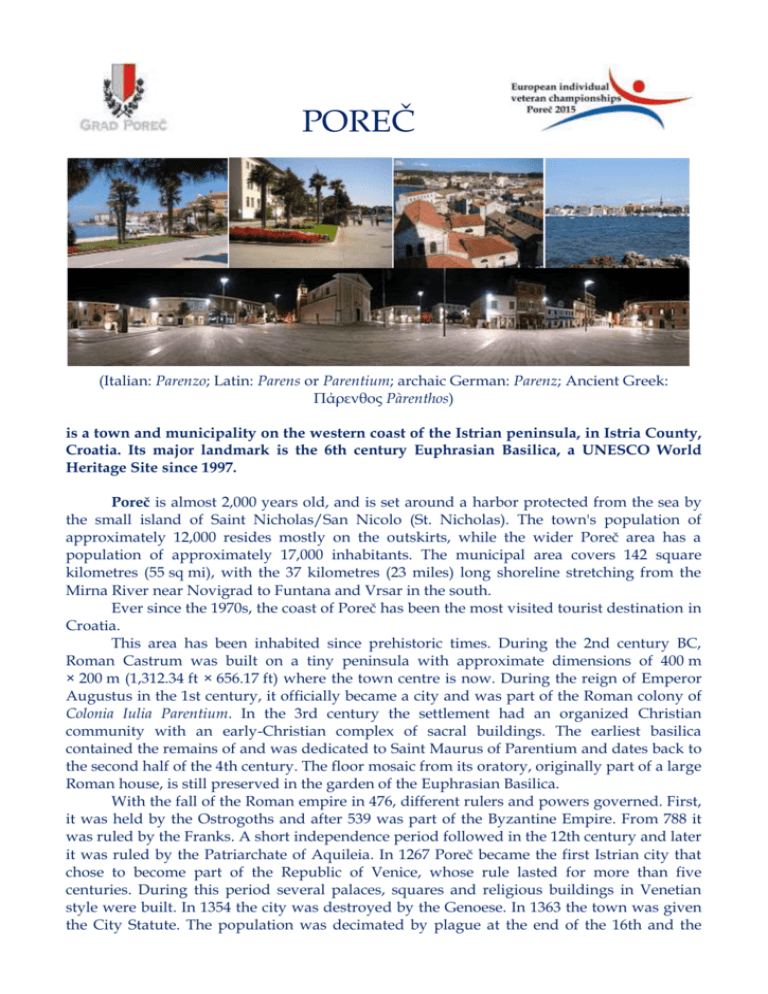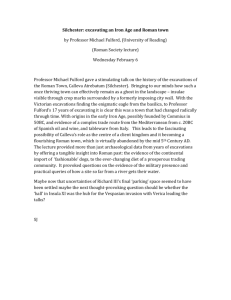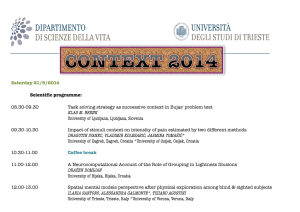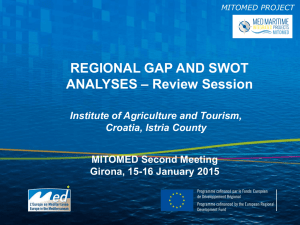Poreč
advertisement

POREČ (Italian: Parenzo; Latin: Parens or Parentium; archaic German: Parenz; Ancient Greek: Πάρενθος Pàrenthos) is a town and municipality on the western coast of the Istrian peninsula, in Istria County, Croatia. Its major landmark is the 6th century Euphrasian Basilica, a UNESCO World Heritage Site since 1997. Poreč is almost 2,000 years old, and is set around a harbor protected from the sea by the small island of Saint Nicholas/San Nicolo (St. Nicholas). The town's population of approximately 12,000 resides mostly on the outskirts, while the wider Poreč area has a population of approximately 17,000 inhabitants. The municipal area covers 142 square kilometres (55 sq mi), with the 37 kilometres (23 miles) long shoreline stretching from the Mirna River near Novigrad to Funtana and Vrsar in the south. Ever since the 1970s, the coast of Poreč has been the most visited tourist destination in Croatia. This area has been inhabited since prehistoric times. During the 2nd century BC, Roman Castrum was built on a tiny peninsula with approximate dimensions of 400 m × 200 m (1,312.34 ft × 656.17 ft) where the town centre is now. During the reign of Emperor Augustus in the 1st century, it officially became a city and was part of the Roman colony of Colonia Iulia Parentium. In the 3rd century the settlement had an organized Christian community with an early-Christian complex of sacral buildings. The earliest basilica contained the remains of and was dedicated to Saint Maurus of Parentium and dates back to the second half of the 4th century. The floor mosaic from its oratory, originally part of a large Roman house, is still preserved in the garden of the Euphrasian Basilica. With the fall of the Roman empire in 476, different rulers and powers governed. First, it was held by the Ostrogoths and after 539 was part of the Byzantine Empire. From 788 it was ruled by the Franks. A short independence period followed in the 12th century and later it was ruled by the Patriarchate of Aquileia. In 1267 Poreč became the first Istrian city that chose to become part of the Republic of Venice, whose rule lasted for more than five centuries. During this period several palaces, squares and religious buildings in Venetian style were built. In 1354 the city was destroyed by the Genoese. In 1363 the town was given the City Statute. The population was decimated by plague at the end of the 16th and the beginning of the 17th century. After the fall of the Venetian Republic, Poreč came under the sovereignty of the Habsburg Monarchy. Between 1805 and 1814, Poreč was part of the Napoleonic Kingdom of Italy and then of the Illyrian Provinces, nominally part of the First French Empire. After this period it was returned to the Habsburgs, with the Monarchy reorganized into the Austrian Empire. In 1844 a steamship connection was established between Poreč and Trieste. In 1861, Poreč became the capital of Istria, the seat of the regional Parliament, with schools, administrative and judiciary offices, and other services. During this time, it slowly became a shipbuilding center. It also became a popular tourist resort for the AustroHungarian aristocracy. Between 1902 and 1935 the Parenzana (from the name 'Parenzaner Bahn'), a narrow-gauge railway line connected the town to Trieste. After 1918, it was annexed by the Kingdom of Italy. In 1947, it became part of Croatia. The Italian population left the city and was replaced by Slavic people from different regions of Yugoslavia.[4] In 1944, the city was bombed by the Allies 34 times, damaging 75% of the city.[5] From 1945 to 1991 Poreč was a city of SR Croatia, a part of the Socialist Federal Republic of Yugoslavia. In 1991 Croatia became an independent state. Today, the city's Italian name ("Parenzo") is also used in an official capacity. Climate Situated on the western coast of Istria and cooled by sea breezes, the local climate is relatively mild and free of oppressive summer heat. The month of July is the hottest, with a maximum air temperature of 30°C in conditions of low humidity, while January is the coldest with an average of 6 °C (43 °F). There are more than 2,400 hours of sun a year, an average of more than 10 hours of sunshine during the summer days. Sea temperatures can reach 28 °C (82 °F), higher than one might expect compared to the coast of southern Croatia where the air temperatures are higher. The average annual rainfall of 920 mm (36.2 in) is more or less equally distributed throughout the year, although July and August are very dry.[8] Winds here are Bora, bringing the cold, clear weather from the north in the winter, and the Sirocco warm Mediterranean wind from the south bringing rain. The summer breeze that blows from the land to the sea is called the Maestral. Physical characteristics The Baredine Cave, the only open geological monument in Istria, is in the vicinity. Stalagmites in the cave are known for their curious shapes. One is said to resemble the Virgin Mary, another the Leaning Tower of Pisa.[9] (Lim Bay) is a 12-km long fjord-like canal, created by the river Pazinčica eroding the ground on its way to the sea. Quartz boulders are occasionally found here, exposed by the sea. The landscape is rich in Mediterranean vegetation, with pine woods and green bushes, mostly of the holm oak and strawberry tree. For generations, the fertile blood-red land (Crljenica) has been used for agriculture, with cereals, orchards, olive groves and vegetables the main crops. Today the production of organic food is significant, including olives, grapes, and popular wines such as Malvazija, Borgonja, Merlot, Pinot, Cabernet Sauvignon and Teran. Transportation Road traffic is the primary form of transportation. Poreč is well-connected with the rest of Istria and with larger cities such as Trieste, Rijeka, Ljubljana and Zagreb. The nearest commercial airport is in Pula. Sea traffic is less important today than it was in previous centuries; these days it is primarily used for tourist excursions. The closest railway station is in Pazin, which is the seat of the Istria County local authority. Between 1902 and 1937 the Parenzana, a narrow-gauge railw ay line connected the town to Trieste Coordinates: Coordinates: 45°13′N 13°35′E45.217°N 13.583°E 45°13′N 13°35′E45.217°N 13.583°E Main sights The town plan still shows the ancient Roman Castrum structure. The main streets are Decumanus and Cardo Maximus, still preserved in their original forms. Marafor is a Roman square with two temples attached. One of them, erected in the first century AD, is dedicated to the Roman god Neptune; its dimensions are 30 by 11 m (98.43 by 36.09 ft) Intersection of Decumanus and Saint Eleutherius, martyr streets in center Poreč. A few houses from the Romanesque period have been preserved and beautiful Venetian Gothic palaces can be seen here. Originally a Gothic Franciscan church built in the 13th century, the 'Dieta Istriana' hall was remodeled in the Baroque style in the 18th century. The Euphrasian Basilica, rebuilt in the 6th century under the Byzantine Empire and bishop Euphrasius, is the most important historical site in Parenzo. It is a protected World Heritage Site, so designated by UNESCO in 1997. Between the 12th and 19th centuries, the city had defensive walls, as the better-known Dubrovnik still does today. Tourism In 1844 the Austrian Lloyd steamship company opened a tourist line which called at Parenzo. The first tourist guide describing and depicting the town was printed as early as 1845. The oldest hotel is the Riviera, constructed in 1910. Later came the Parentino and others. Today, tourist infrastructure is intentionally dispersed along the 37 km (23 mi) long coastline, between the Mirna River and the deep Lim valley. The south hosts self-contained centres like Plava Laguna (Blue Lagoon), Zelena Laguna (Green Lagoon), Bijela Uvala (White Cove) and Brulo. To the north, mirroring centres are Materada, Červar Porat, Ulika and Lanterna. In the high season, the area's temporary population can exceed 120,000. Poreč's heritage can be seen in the historic town centre, in museums and galleries hosted in houses and palaces, many of them still private homes as they have been for centuries. In the off season, weekend visitors from Croatia, Slovenia, Austria and Italy visit the area. Sports complexes are developed and used year-round. Welcome to Poreč








